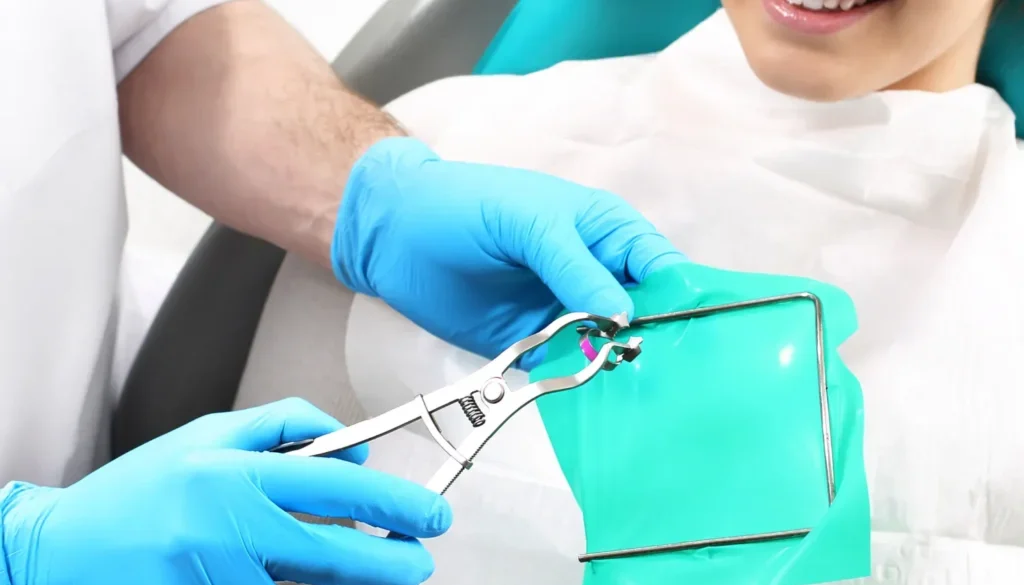Mastering Rubber Dam Isolation: Techniques to Improve Clinical Outcomes
Rubber dam isolation is one of the most effective tools in modern dentistry for enhancing procedural precision, safety, and patient comfort. Regardless of whether you are performing restorative work, endodontic therapy, or aesthetic procedures, mastering rubber dam isolation is essential for predictable outcomes. This blog highlights the key techniques behind rubber dam isolation, including dental dam isolation, rubber dam placement, and rubber dam placement techniques, providing practical steps and clinical pearls for every dental practitioner.
Why Rubber Dam Isolation Still Matters
Despite its proven clinical benefits, the use of rubber dams remains inconsistent across practices worldwide. Some clinicians avoid it due to perceived time constraints or patient discomfort. However, when used correctly, rubber dam isolation offers a sterile working field, moisture control, improved visibility, and protection of soft tissues.
Whether you’re preparing for composite bonding or conducting root canal therapy, proper dental dam isolation allows you to focus on precision without contamination. At GRADA’s upcoming conference on regenerative and aesthetic dentistry, expert sessions will dive deeper into advanced rubber dam workflows — register now to reserve your seat.
The Fundamentals of Rubber Dam Placement
Step-by-Step Guide to Rubber Dam Placement
A smooth procedure begins with preparation. Here’s a step-by-step overview of successful rubber dam placement:
- Preoperative Assessment Evaluate the arch, tooth morphology, and any periodontal issues. Choose a suitable rubber dam clamp to ensure secure retention.
- Punching the Dam Use a rubber dam punch to create appropriately spaced holes depending on the teeth you wish to isolate.
- Clamp Selection and Placement Select the right clamp and place it gently on the anchor tooth before stretching the dental rubber dam over it.
- Securing the Frame Attach the dam to the frame and ensure a good seal using floss or a ligature if necessary.
- Seal and Adjust Apply a water-soluble lubricant or dental dam sealant around the isolated teeth to enhance sealing.
Using these rubber dam placement steps ensures minimal leakage and maximum efficiency during the procedure.
Clinical Tip: Clamp Stability
Rubber dam clamp placement must be stable, especially during endodontic access or rotary instrumentation. Moreover, an unstable clamp can cause delays or compromise visibility. When placing the clamp, ensure that the jaws engage the cervical region of the tooth without impinging on the gingiva.
Rubber Dam Isolation in Aesthetic and Restorative Dentistry
In aesthetic dentistry, controlling the field is crucial. Moisture contamination can lead to restoration failure, marginal discoloration, or post-operative sensitivity. Rubber dam isolation ensures a clean, dry environment—especially critical during adhesive procedures such as veneer bonding or Class V restorations.
Dental dam placement also protects the patient’s airway from debris and sharp instruments, improving overall safety. Many dentists report increased patient trust and comfort when using rubber dams during longer or more involved procedures.
At GRADA’s annual conference, hands-on sessions guide participants through real-life cases to improve technique and confidence in using rubber dams in both restorative and regenerative procedures.
Techniques for Faster Rubber Dam Application
Speed and efficiency often dictate whether clinicians choose to apply a rubber dam. Here are some techniques that can streamline rubber dam application:
- Use pre-marked dams for faster punching.
- Choose wingless clamps for better visualization and ease of placement.
- Preload the dam onto the frame to reduce chair time.
- Practice quadrant isolation instead of full-arch when feasible.
Incorporating these techniques into daily practice minimizes the learning curve and boosts consistency.
Advanced Rubber Dam Placement Techniques
For multi-tooth isolation or complex cases (like anterior esthetic zones), consider these additional strategies:
- Split-dam technique: Ideal for bridge work or when full coverage isn’t possible.
- Butterfly technique: Used for anterior isolation with improved lip retraction.
- Floss tie ligatures: Helpful in securing the dam between teeth and preventing slippage.
These techniques allow you to adapt to varying clinical situations without letting the rubber dam get contaminated.
Frequently Asked Questions (FAQ)
Rubber dam isolation improves visibility, moisture control, and overall safety during dental procedures. It greatly reduces the chances of contamination and improves the success and quality of restorative procedures.
When placed correctly, patients often find the dam less invasive than expected. Communication and reassurance are key. Many patients prefer it because it keeps their mouths dry and free of water spray or debris.
With practice, placing a rubber dam can be done in under two minutes. Using efficient rubber dam placement techniques and pre-organized materials can help save time.
Rubber dams are especially beneficial in endodontics, adhesive restorative dentistry, bleaching, and pediatric procedures. Any treatment requiring moisture control and precision will benefit from dental dam isolation.
Absolutely. GRADA’s 2025 conference in Dubai will include hands-on training in rubber dam placement, dental isolation methods, and clamp techniques. Click here to learn more and register for GRADA 2025.
Final Thoughts: Elevate Your Clinical Outcomes with Rubber Dam Mastery
Incorporating rubber dam isolation into your daily clinical practice is among the most significant actions you can take toward improving patient outcomes. From straightforward fillings to complex aesthetic procedures, a well-placed dental rubber dam simplifies the workflow, enhances efficiency, and reduces complications.
While it may take a few attempts to get comfortable, the benefits far outweigh the initial learning curve. Combine the right tools with the proper training, and rubber dam usage will soon become second nature. Join the conversation and skill-building at the GRADA 2025 Conference, where you’ll learn advanced rub.


